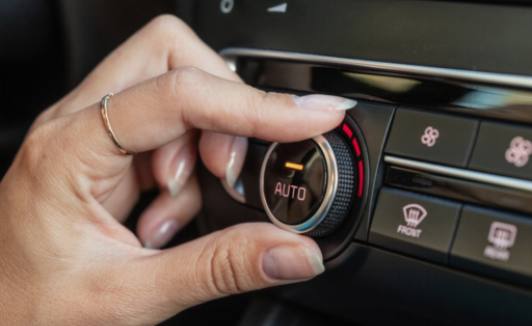How to Properly Replace and Repair Air Conditioning Hoses and Lines in Your Car
22 November 2025 by Mikey P.Maintaining a properly functioning air conditioning system in your car is essential for staying cool and comfortable on the road, especially during the hot summer months. One common issue that can arise is a faulty air conditioning hose or line, which can lead to leaks and inefficient cooling. In this article, we will guide you through the process of diagnosing, replacing, and repairing air conditioning hoses and lines in your car to ensure your AC system is running smoothly.

Understanding Air Conditioning Systems in Cars
This process involves the circulation of refrigerant through a series of hoses and lines, which carry the refrigerant to various components of the system. These components include the compressor, condenser, evaporator, and expansion valve. The compressor is responsible for pressurizing the refrigerant and circulating it through the system. The condenser is where the refrigerant releases heat to the outside air, while the evaporator absorbs heat from the inside air. The expansion valve regulates the flow of refrigerant, allowing for proper cooling of the air. The air conditioning hoses and lines play a crucial role in maintaining the integrity of the system and ensuring that the refrigerant circulates efficiently. Over time, these hoses and lines can develop faults such as leaks, cracks, or blockages, which can lead to a loss of cooling performance. By understanding the basics of how air conditioning systems work in cars, you can better diagnose and repair any issues that may arise with the hoses and lines. Proper maintenance and timely repairs can help ensure that your car's air conditioning system continues to operate smoothly and effectively.Diagnosing Faults in AC Hoses and Lines
Diagnosing faults in AC hoses and lines can be essential in keeping your car's air conditioning system running smoothly. There are several common signs that may indicate a problem with your AC hoses and lines. These include:1. Leaking refrigerant: If you notice a decrease in the cooling power of your AC system, it may be due to a leak in the hoses or lines. Refrigerant leaks can cause the system to lose its ability to cool the air properly.
2. Squealing or hissing sounds: Unusual noises coming from the AC system could be a sign of a leak or blockage in the hoses or lines. Hissing sounds may indicate a leak, while squealing noises could be caused by a blockage.
3. Visual inspection: Inspecting the hoses and lines for visible damage such as cracks, wear, or corrosion can help identify any potential issues. Damaged hoses and lines should be replaced to prevent further damage to the system.
4. Poor airflow: If the airflow from the AC vents is weak or inconsistent, it could be a sign of a blockage in the hoses or lines. Blockages can restrict the flow of refrigerant and prevent the system from cooling effectively.
5. Warm air: If your AC system is blowing warm air instead of cold air, it may be due to a fault in the hoses or lines. Low refrigerant levels, leaks, or blockages can all cause the air conditioning system to malfunction. By identifying and addressing faults in the AC hoses and lines, you can ensure that your car's air conditioning system is functioning properly and efficiently. Regular maintenance and inspection of the hoses and lines can help prevent major issues and keep your AC system running smoothly.
Tools and Materials Needed for AC Hose Repair
When it comes to repairing air conditioning hoses and lines in your car, there are a few tools and materials that you will need to have on hand. These include:- Safety goggles and gloves
- Refrigerant recovery machine
- AC manifold gauge set
- Vacuum pump
- Ratchet set
- Wrenches
- Screwdrivers
- Tubing cutter
- Hose clamps
- Replacement AC hoses and lines
- O-rings
- AC system oil
- Replacement refrigerant Having these tools and materials readily available will ensure that you are properly equipped to repair and replace any faulty air conditioning hoses and lines in your vehicle.